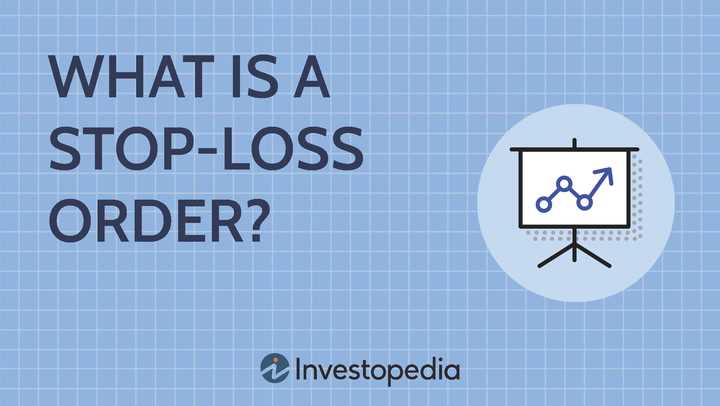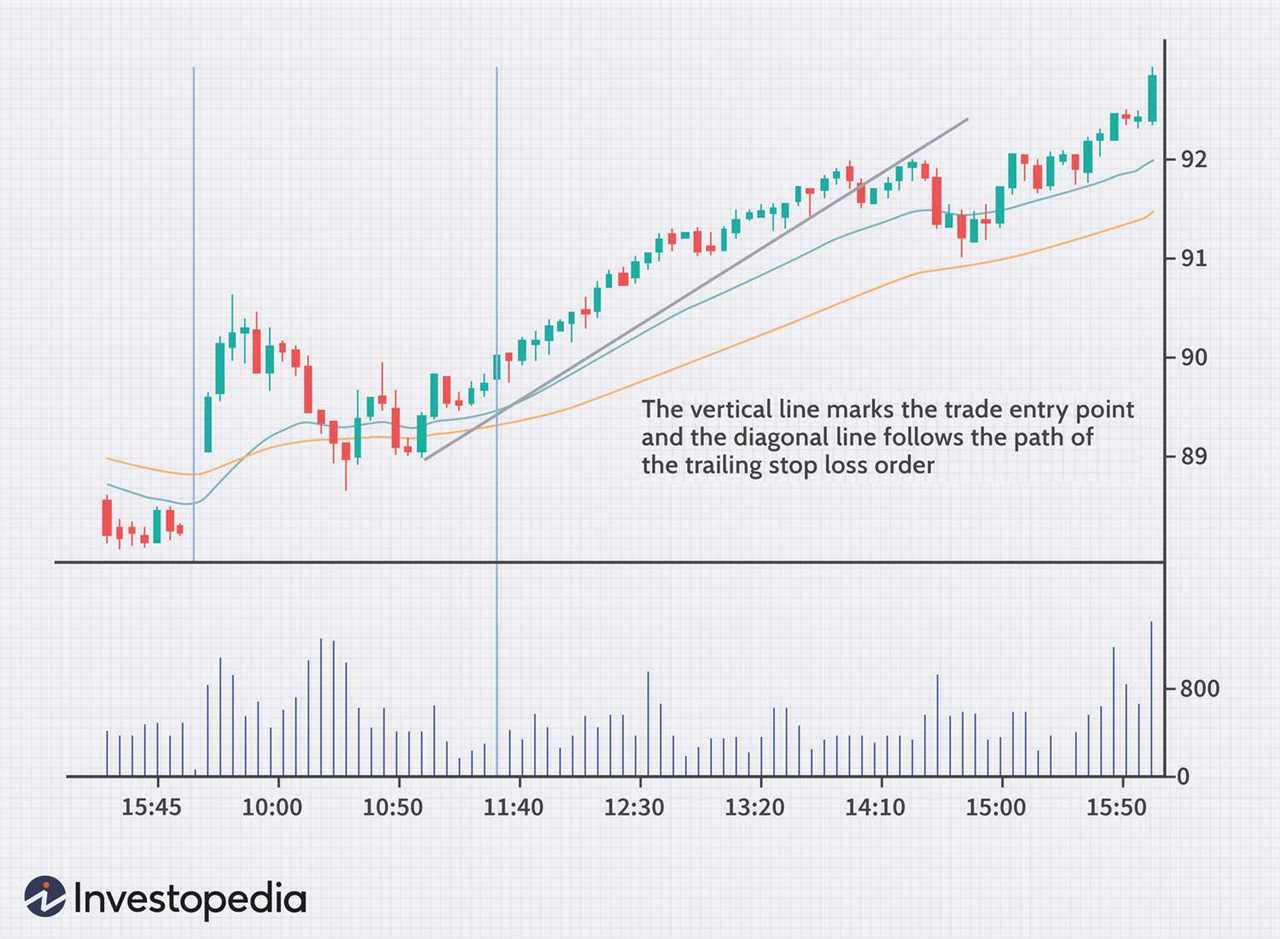What are Stop-Loss Orders?
Stop-loss orders are a crucial risk management tool used by traders in the financial markets. They are designed to limit potential losses and protect investments in case the market moves against the trader’s position.
When placing a stop-loss order, traders specify a price level at which they are willing to sell their assets. If the market reaches or goes below this price level, the stop-loss order is triggered, and the assets are automatically sold. This allows traders to exit a trade before significant losses occur.
Why are Stop-Loss Orders Important?
Stop-loss orders are important because they provide traders with a disciplined approach to risk management. By setting a predetermined exit point, traders can protect their capital and prevent emotional decision-making during volatile market conditions.
Stop-loss orders also help traders to stay focused on their overall trading strategy and objectives. They provide a level of control and discipline that is essential for long-term success in the financial markets.
How do Stop-Loss Orders Work?

Stop-loss orders work by automatically executing a sell order when the market reaches or goes below the specified stop-loss price level. This ensures that traders can limit their losses and exit a trade without having to constantly monitor the market.
It is important to note that stop-loss orders do not guarantee that a trader will exit a trade at the exact stop-loss price level. In fast-moving markets or during periods of high volatility, the execution price may differ slightly from the specified stop-loss price.
Setting Stop-Loss Levels
Setting appropriate stop-loss levels is crucial for effective risk management. Traders should consider factors such as market volatility, asset liquidity, and their own risk tolerance when determining the stop-loss price level.
Stop-loss levels should be set at a point where the trader’s risk is limited but not so close that normal market fluctuations trigger unnecessary sell orders. It is important to strike a balance between protecting capital and allowing for potential market movements.
Execution of Stop-Loss Orders

Traders should be aware that during periods of extreme market volatility or when trading illiquid assets, the execution of stop-loss orders may be delayed or filled at a different price than expected. It is important to consider these factors when setting stop-loss levels.
Benefits of Stop-Loss Orders
Stop-loss orders offer several benefits to traders:
- Limit potential losses and protect capital
- Provide a disciplined approach to risk management
- Prevent emotional decision-making during volatile market conditions
- Allow traders to focus on their overall trading strategy and objectives
- Automatically execute sell orders when the market reaches or goes below the specified stop-loss price level
Overall, stop-loss orders are an essential tool for traders looking to manage risk and protect their investments in the financial markets.
Importance of Stop-Loss Orders
Protecting Your Capital
The primary importance of stop-loss orders is to protect your capital. By setting a stop-loss level, you are essentially determining the maximum amount of loss you are willing to tolerate on a trade. This helps to prevent catastrophic losses and ensures that you can live to trade another day.
Without a stop-loss order, you are exposed to the risk of a significant market downturn or unexpected events that can wipe out your entire investment. By using stop-loss orders, you can minimize the impact of such events and protect your hard-earned capital.
Emotional Control
Another crucial aspect of stop-loss orders is that they help traders maintain emotional control. When the market moves against your position, it’s easy to let fear and panic take over, leading to irrational decision-making.
With a stop-loss order in place, you can remove the emotional element from your trading. You know that if the market reaches your stop-loss level, the trade will be automatically closed, and you will exit with a predefined loss. This allows you to stick to your trading plan and avoid making impulsive decisions based on emotions.
Risk Management
Risk management is a fundamental principle in trading, and stop-loss orders are a key tool for effective risk management. By setting stop-loss levels based on your risk tolerance and trading strategy, you can control the amount of risk you are willing to take on each trade.
Stop-loss orders also allow you to adjust your risk-reward ratio. For example, you can set a tighter stop-loss level to limit your potential loss but also reduce your profit target. Alternatively, you can set a wider stop-loss level to give your trade more room to breathe but also increase your potential loss.
| Benefits of Stop-Loss Orders |
|---|
| 1. Limit losses and reduce risk |
| 2. Protect capital |
| 3. Maintain emotional control |
| 4. Enhance risk management |
Overall, stop-loss orders are an indispensable tool for traders looking to manage risk effectively. By using stop-loss orders, you can protect your capital, maintain emotional control, and enhance your risk management strategy. Make sure to incorporate stop-loss orders into your trading plan to increase your chances of long-term success in the financial markets.
How Stop-Loss Orders Work
A stop-loss order is a powerful risk management tool that traders can use to limit their losses and reduce risk in the financial markets. It is an order placed with a broker to sell a security if it reaches a certain price level. When the price of the security reaches or falls below the stop-loss level, the order is triggered and the security is sold automatically.
Automatic Protection
For example, let’s say a trader buys shares of a stock at $50 per share and sets a stop-loss order at $45 per share. If the price of the stock falls to $45 or below, the stop-loss order will be triggered and the shares will be sold. This ensures that the trader limits their potential losses to $5 per share.
Minimizing Emotional Decision-Making
Another benefit of stop-loss orders is that they help minimize emotional decision-making. When traders set a stop-loss level, they have a predetermined exit strategy in place. This prevents them from making impulsive decisions based on fear or greed, which can often lead to significant losses.
By using stop-loss orders, traders can stick to their trading plan and avoid making emotional decisions that could negatively impact their trading performance.
- A stop-loss order is a risk management tool that automatically sells a security if it reaches a certain price level.
- Stop-loss orders provide automatic protection and eliminate the need for constant monitoring of the market.
- They help minimize emotional decision-making and allow traders to stick to their trading plan.
Setting Stop-Loss Levels
Setting stop-loss levels is a crucial step in managing risk and protecting your investments. A stop-loss level is the price at which you are willing to sell a security to limit your losses if the market moves against you.
One common approach to setting stop-loss levels is to use technical analysis. This involves analyzing charts and patterns to identify support levels, which are price levels where the security has historically found buying interest. By setting your stop-loss level slightly below the support level, you can protect yourself from significant losses if the security breaks below that level.
Another approach is to use a percentage-based stop-loss. For example, you may decide to set a stop-loss level at 5% below the current market price. This allows for some flexibility and takes into account the natural fluctuations in the market.
It is important to regularly review and adjust your stop-loss levels as market conditions change. This ensures that your stop-loss levels are still appropriate and in line with your risk tolerance.
Remember, setting stop-loss levels is a proactive strategy that helps you limit your losses and protect your investments. By carefully considering various factors and regularly reviewing your stop-loss levels, you can effectively manage risk and increase your chances of success in the market.
Execution of Stop-Loss Orders
Once a stop-loss order is triggered, it becomes a market order and is executed at the next available price. This means that the order will be filled at the best price currently available in the market, which may be different from the stop-loss level set by the trader.
To minimize the risk of slippage, traders can use various techniques, such as placing stop-loss orders during periods of lower market volatility, using limit orders instead of market orders, or using advanced order types that offer more control over execution.
It is also important to regularly monitor and adjust stop-loss orders as market conditions change. Traders should review their positions and adjust their stop-loss levels accordingly to ensure that they are still appropriate and in line with their risk management strategy.
Overall, the execution of stop-loss orders is a crucial aspect of risk management in trading. By using stop-loss orders effectively, traders can limit their losses and reduce the risk of significant drawdowns in their trading accounts.
Benefits of Stop-Loss Orders
Stop-loss orders offer several key benefits for traders:
- Limit Losses: The primary benefit of using stop-loss orders is to limit potential losses. By setting a predetermined price at which to sell a security, traders can protect themselves from significant losses if the market moves against them.
- Reduce Risk: Stop-loss orders help to reduce risk by automatically triggering a sell order when the price reaches a certain level. This can help traders avoid emotional decision-making and prevent them from holding onto a losing position for too long.
- Protect Profits: Stop-loss orders can also be used to protect profits. Traders can set a stop-loss order at a specific price level to lock in gains and ensure that they do not lose their profits if the market reverses.
- Peace of Mind: Using stop-loss orders can provide traders with peace of mind, knowing that they have a plan in place to limit their losses. This can help to reduce stress and allow traders to focus on other aspects of their trading strategy.
- Automation: Stop-loss orders can be set up in advance and executed automatically by the trading platform. This allows traders to set their desired stop-loss levels and then let the market take its course without needing to constantly monitor their positions.
- Discipline: Implementing stop-loss orders can help traders maintain discipline in their trading. By sticking to predetermined stop-loss levels, traders can avoid making impulsive decisions based on emotions or short-term market fluctuations.
- Flexibility: Stop-loss orders can be adjusted as market conditions change. Traders can move their stop-loss levels higher to lock in profits or lower to protect against potential losses. This flexibility allows traders to adapt to changing market dynamics and optimize their risk management strategy.
Overall, stop-loss orders are a valuable tool for traders looking to manage their risk and protect their capital. By implementing stop-loss orders as part of their trading strategy, traders can improve their chances of long-term success in the market.

Emily Bibb simplifies finance through bestselling books and articles, bridging complex concepts for everyday understanding. Engaging audiences via social media, she shares insights for financial success. Active in seminars and philanthropy, Bibb aims to create a more financially informed society, driven by her passion for empowering others.
